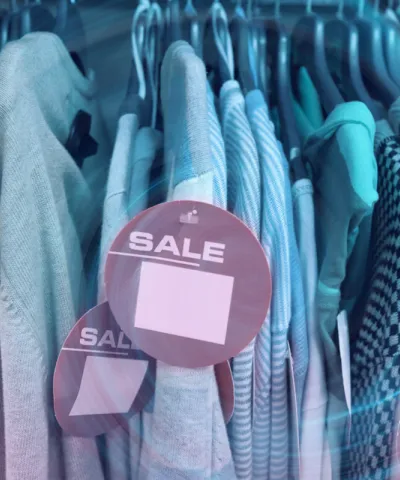Across FMCG, sustainable growth comes from disciplined Revenue Growth Management (RGM) embedded in how teams plan and trade. We unpack typical barriers and practical commercial excellence strategies that will help businesses move value, margin and momentum together.
In any global FMCG business, setting up a Commercial Excellence (ComEx) team is both a strategic necessity and a complex transformation. When executed well, ComEx becomes a central pillar of sustainable, profitable growth.
Yet, success depends not just on tools and data, but on culture, leadership, cross-functional alignment, and shared accountability. Most ComEx teams today have an RGM team embedded as part of a wider function with Shopper Marketing and Category Development. In this article, we shine a spotlight on typical barriers to the RGM part of a ComEx function and offer practical strategies for overcoming them.
Breaking silos: Healthy tension between sales, marketing, and RGM
Healthy tension between sales, marketing, and RGM is not only inevitable but is also essential. Each function brings a different lens: sales team prioritizes customer targets, marketing protects brand equity, and RGM ensures commercial excellence.
Tension arises when these perspectives are unbalanced, or decisions are made in silos. The key is to channel this tension constructively by defining roles clearly, using shared KPIs like promo ROI and mix contribution, and establishing the right forums (like promo councils or agile squads) where these teams can challenge and align in a structured way.
Role of AI: Accelerating RGM maturity
AI is rapidly accelerating how RGM teams operate by shifting from reactive analysis to proactive value creation. The biggest barrier to achieving maturity in this space is data. Having clean data and in a format that is easily ingested is crucial.
However, some FMCGs have managed to find workarounds so that price elasticity modelling, promo performance, and optimizing promo guidelines in real time is made into light work. This allows teams to work faster, deeper, and with more impact in front of customers.
As AI capability grows, RGM teams must evolve too. This means upskilling teams, redesigning workflows to embed AI tools, and supercharge RGM teams.
RGM is everyone’s role
A major barrier to scale is the belief that RGM is a specialist’s responsibility. RGM only works when it becomes a shared commercial mindset. That means sales teams using elasticity insights to plan customer negotiations, marketers designing NPDs with profitable pack price architecture, and finance teams partnering on value trade-offs, not just budget control.
Success comes from embedding RGM metrics into all relevant job descriptions, celebrating cross-functional wins, and equipping teams with simple tools to apply RGM thinking daily.
From gut feel to data-led decisions
FMCG teams often rely on intuition, especially in pricing and promo planning. But gut feel alone no longer cuts it in a world of rising input costs, volatile demand, and margin pressure.
RGM must anchor decisions in data-shopper elasticity, promo ROI, price ladders, and pack profitability. This requires democratizing access to insights via dashboards, simulators and scenario models. Crucially, teams must be trained to trust the data beyond retrospective analysis and use it in cross-functional planning.
Embedding RGM into business planning cycles
Another common failure point is treating RGM as an afterthought during S&OP, annual or long-range planning. Instead, it must be embedded from the start by inputting price/mix assumptions, competitive price gaps, promo efficiency curves, and pack architecture choices.
RGM should help shape the revenue strategy alongside validating it. Scenario modelling is key here: giving commercial leaders a range of outcomes tied to value levers, not just volume forecasts.
Aligning incentives: Volume vs. value
Many organizations still reward sales teams based on volume or revenue, while RGM, finance, and leadership chase profitability. This misalignment drives short-termism, over-discounting, and value destruction.
The fix? Introduce hybrid incentive models where part of the sales bonus depends on margin delivery, mix quality, or promo ROI. Install guardrails like minimum margin thresholds or discount caps and co-own customer plans between sales, RGM, and finance. Make profitability a shared metric.
Tracking impact: Making RGM count
For RGM to earn its seat at the table, it must prove its value. That means tracking not just volume or revenue growth, but price/mix contribution, promo efficiency, innovation value delivery, and pack profitability.
These KPIs should feed into business reviews, quarterly commercial scorecards, and individual performance discussions. Celebrate and communicate wins, especially those achieved through cross-functional collaboration.
Structuring for scale: Governance and local fit
To drive consistency, global FMCG businesses often build RGM Centers of Excellence. However, these must be balanced with local agility.
The most effective structure is a hub-and-spoke model where central teams define playbooks, tools, and guardrails, and local RGM leads adapt and execute. Regular governance forums help calibrate decisions, ensure market relevance, and escalate exceptions. Markets should be clustered by maturity and supported accordingly.
Few organizations have this nailed.
Success depends on defining clear role profiles, creating cross-functional learning programs, work shadowing, and building internal career paths in RGM. Rotation between sales, marketing, and RGM builds empathy and breaks silos. External hires may bring speed, but internal career development ensures stickiness.
Leadership endorsement: From support to stewardship
RGM cannot be successful without senior leadership championing it as a strategic growth engine. Passive support isn’t enough. Leaders must actively sponsor RGM initiatives, reference them in town halls and planning sessions, and embed RGM KPIs in driving business goals.
This gives RGM permission to challenge and provides a platform to elevate key initiatives. Senior leaders must role-model the behaviors that RGM demands by balancing value over volume, supporting disciplined pricing, and fostering collaboration across commercial functions.
Conclusion: From tactical function to RGM as a strategic muscle
When done right, RGM is much more than just pricing, it’s the conduit between brand ambition, commercial feasibility, and financial delivery. However, it only works when it is led from the top, owned across teams, grounded in data, and embedded into planning and performance management.
To find out more about this topic please contact our experts today.
Have you joined the UK CPG Network? Sign up here to become a member of the UK CPG Network, exclusively for leaders in Revenue Growth Management, Shopper Marketing and Category Management. A forum to exchange ideas, best practices, and common pitfalls in these hugely complex and challenging roles.







